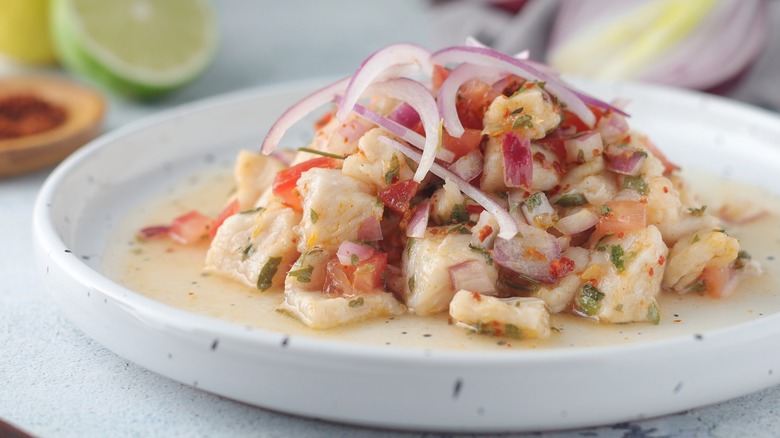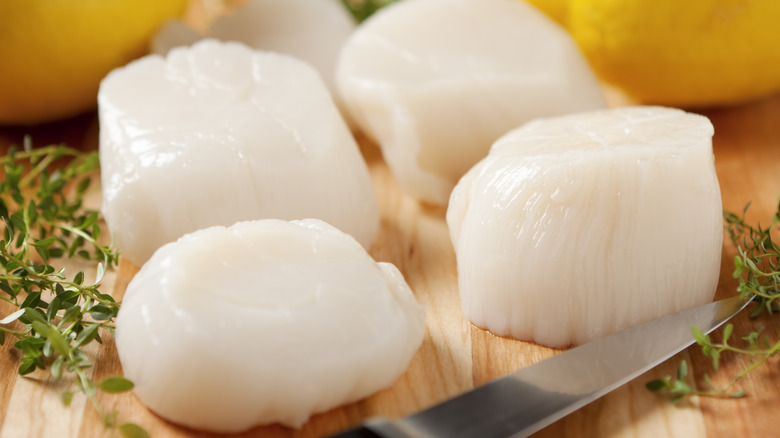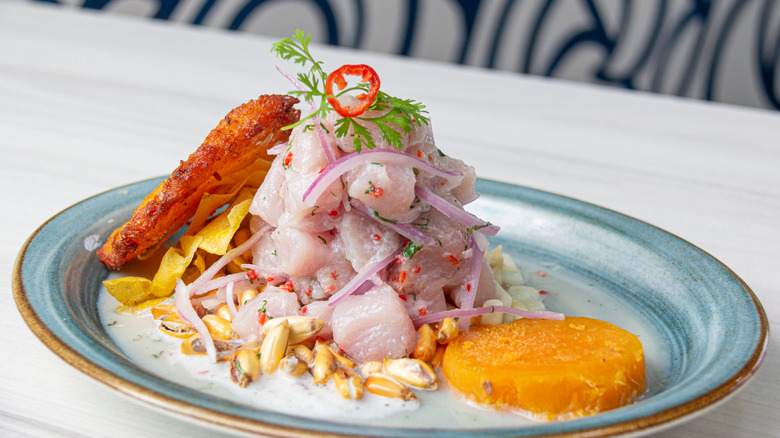For The Best Scallop Ceviche, Mind The Marinating Time
Dining on raw or nearly-raw fish is a centuries-old practice. There is recorded proof of the Chinese eating slices of raw fish 2,000 years ago. Early versions of ceviche have origins in Peru, dating back 3,000 years, according to some food historians. The modern version of ceviche, raw seafood cured in lime juice, most likely arrived in Peru with Spanish colonizers, who imported ingredients like lime and cilantro and added them to existing local dishes. Although today you'll find a variety of ingredients in ceviche recipes, the basic preparation has stayed consistent — because the real secret to ceviche is fresh ingredients and timing.
When making a scallop ceviche, start with fresh, high-quality scallops. They'll contribute to top-notch flavor, but it's also the safest option; the marinating process doesn't necessarily kill bacteria, so fresh is better. When you're ready to let the scallops cure in the lime juice, you don't want to make the common marinating mistake when making ceviche, so set a timer. The length of time that you let them marinate will greatly affect the texture — and it's probably shorter than you would think, depending on the doneness you want. It's generally recommended for scallop ceviche to marinate no longer than five to 10 minutes.
How long do I need to marinate the scallops?
You can certainly leave your scallop ceviche marinating for longer than five minutes, but the choice should depend on the texture you're looking to achieve. The longer the scallop ceviche cures, the more firm and opaque the scallops will become (similar to how they would if you were cooking with heat). In scallop ceviche recipes, the suggested curing time will vary widely. Some will suggest only five minutes for a "rare" texture, but others recommend at least two hours or even overnight. The longer the scallops cure, the more firm they will become.
The best thing you can do when you first start making scallop ceviche is to experiment. Take just a few of the scallop pieces, and let them marinate for different times. As the curing happens, the scallops will firm up and opacify. Then you can decide if you like your ceviche rare, medium-rare, or well-done.
The science of ceviche
Although the texture and color changes as it would when food is cooked with heat, ceviche doesn't actually cook. The science behind ceviche lies in the interaction between the seafood and the lime juice. When the scallops are soaked in the marinade, the citric acid of the lime juice denatures the proteins in the seafood and they start to coagulate. This basically means that the acid reacts with the proteins to change their structure and tenderize them. It's a simple process that leads to flavorful, tender seafood.
Despite the sometimes overpowering taste of lime juice, it won't overwhelm the scallops in your ceviche. Once you've marinated the shellfish in the juice and other ingredients you choose, like spicy chiles, or even fruit, the resulting ceviche will be bright, zesty, fresh, and flavorful. And if you get your timing right, the flavorful marinade will cure the scallop ceviche to the perfect texture.


